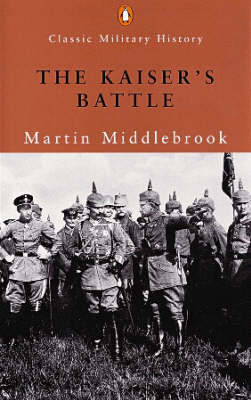Penguin Classic Military History S.
3 total works
The soldiers receive the best service a historian can provide: their story is told in their own words - Guardian
'For some reason nothing seemed to happen to us at first; we strolled along as though walking in a park. Then, suddenly, we were in the midst of a storm of machine-gun bullets and I saw men beginning to twirl round and fall in all kinds of curious ways'
On 1 July 1916, a continous line of British soldiers climbed out from the trenches of the Somme into No Man's Land and began to walk towards dug-in German troops armed with machine-guns. By the end of the day there were more than 60,000 British casualties - a third of them fatal.
Martin Middlebrook's now-classic account of the blackest day in the history of the British army draws on official sources from the time, and on the words of hundreds of survivors: normal men, many of them volunteers, who found themselves thrown into a scene of unparalleled tragedy and horror.


